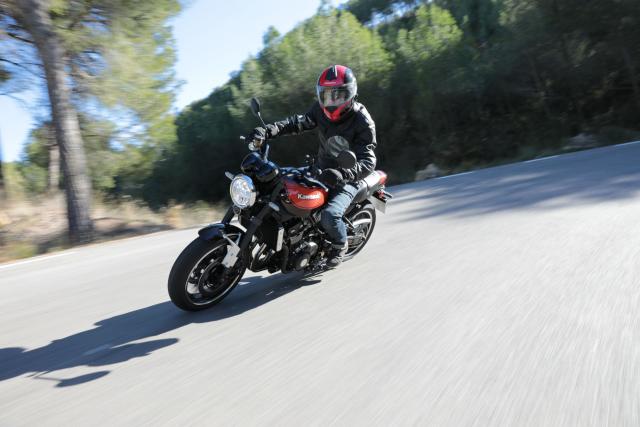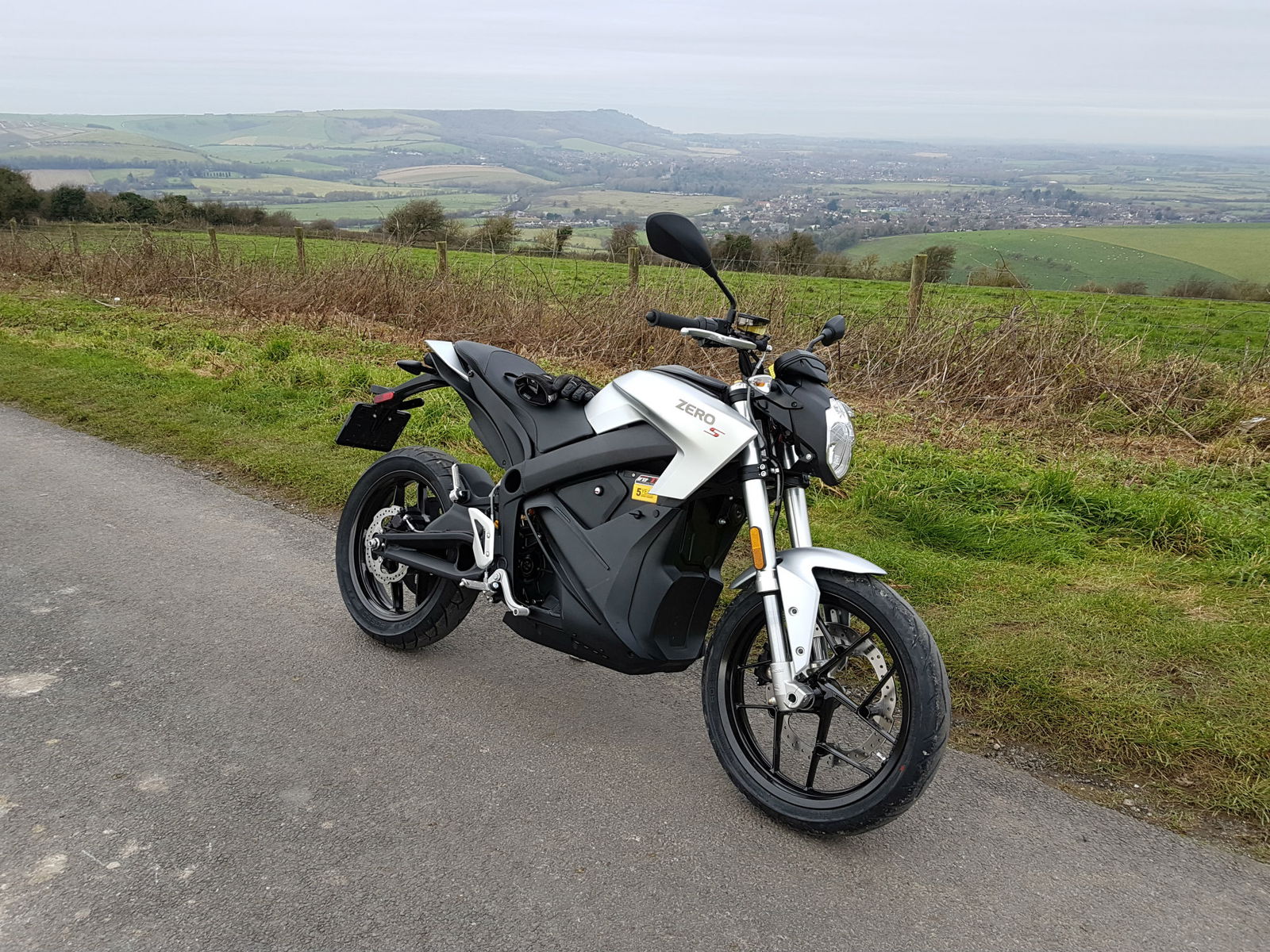First ride: Triumph Tiger 1200 review
We put the new-for-2018 Tiger 1200 through its paces

TRIUMPH has dropped the Explorer moniker from its 1200 Tiger range, in a deliberate reference to the 80 years of Tiger off-road heritage.
From 2018, the 1200 will align with the British manufacturer’s smaller adventure bike – the no-nonsense Tiger 800 – which never succumbed to the ‘Explorer’ add-on.
It’s almost ironic, because if any Tiger will make you want to explore, it’s this latest guise, especially the excellent range-topping, road-going XRt.
The new XCa isn’t bad, either, but I’m still not convinced that when the going gets tough, it wouldn’t prove to be more friendly feline than aggressive beast.
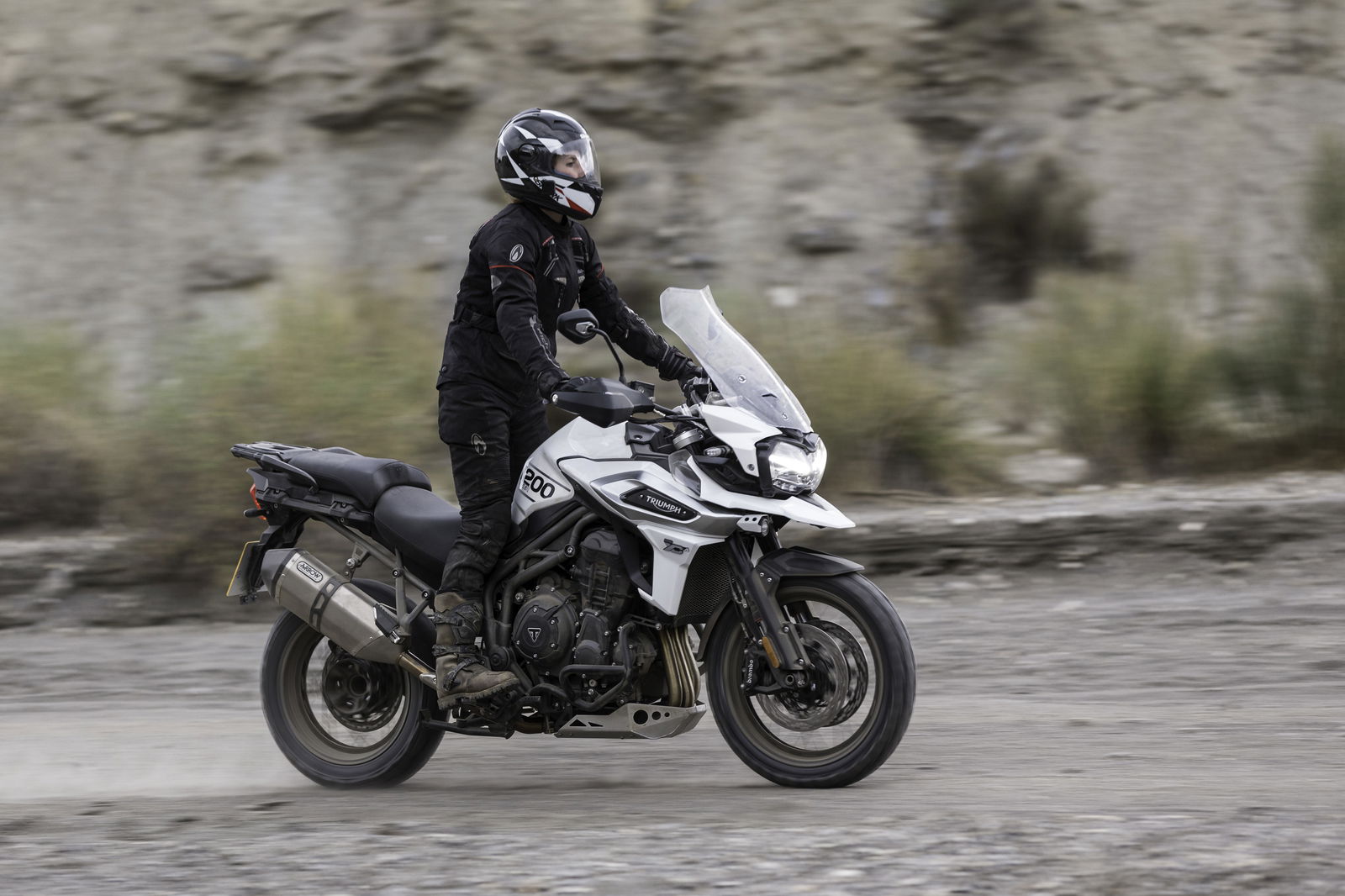
With more than 100 claimed changes over the previous guise (which only hit the market in 2016), Triumph claims the new Tiger is far more focused than before, both on-road and off. These changes result in weight savings of up to 11kg across the six-model line-up, from elements including the engine, chassis and exhaust.
When Triumph revealed the new Tiger at EICMA, it promised better low speed manoeuvrability, handling, and an improved power delivery. Well, the engineers have certainly hit the nail on the head. The top-spec XRt and XCa models are a joy to ride, as I found out on launch in Almeria.
Engine:
At the heart of the new Tiger is a heavily reworked version of Triumph’s signature triple. The 1215cc liquid cooled, 12-valve, DOHC, in-line three-cylinder engine boasts lower inertia and lighter weight engine components than its previous guise. In plain speak, this allows the engine to spin up faster and provide a more immediate power delivery, something which was apparent from the moment I pulled away on the 2018 model. The throttle response is immediate and smooth across the board, improving the Tiger’s rideability.
Triumph stressed that this is still most powerful shaft-drive 1200 on the market – something to be sought after in the 250kg adventure bike bracket. It’s not, however, the lightest, with the XRt and XCa weighing in at 243kg and 248kg dry (BMW’s R1200GS Rallye Sport and TE Exclusive weigh in at 244kg wet).

Torque is linear and progressive until its peak of 90 ft-lb at 7,600 rpm – 1,400 rpm higher than the peak of its predecessor, which made 90.7lbft at 6,200rpm. This gives it an extra kick higher up the rev range.
Power meanwhile, is smooth and equally linear, and ever so slightly higher than that of the Explorer. The 1200 reaches its peak of 139.5hp at 9,350rpm, whereas the Explorer achieved roughly 1hp less at 9,300 rpm.
Power is delivered via a ride-by-wire throttle system, which features various mapping configurations to suit the six riding modes of Rain, Road, Off Road, Sport, Off Road Pro and Rider. The entry-level XR features only the first three modes, with the XRx adding Sport and the XRt the Rider mode. Off Road Pro is reserved for the XC family and completely deactivates ABS and traction control, and switches the suspension to the ‘Off Road’ setting. The gravel and sandy section we rode didn’t really call for this expert level, but I gave it a go anyway. As good as it is, my skillset called for the security of the standard Off Road mode.
Triumph claim a fuel economy of 54.3mpg from this Euro4 unit, which proved to be fairly accurate following our spirited ride. With a 20-litre fuel capacity, it can capably go the distance.
A new silencer on lower spec models is 40mm shorter and 315g lighter than the previous unit, while the range topping XRt and XCa receive a premium, freer flowing Arrow silencer weighing 2.1kg less than before. Both provide a guttural soundtrack for the new Tiger.
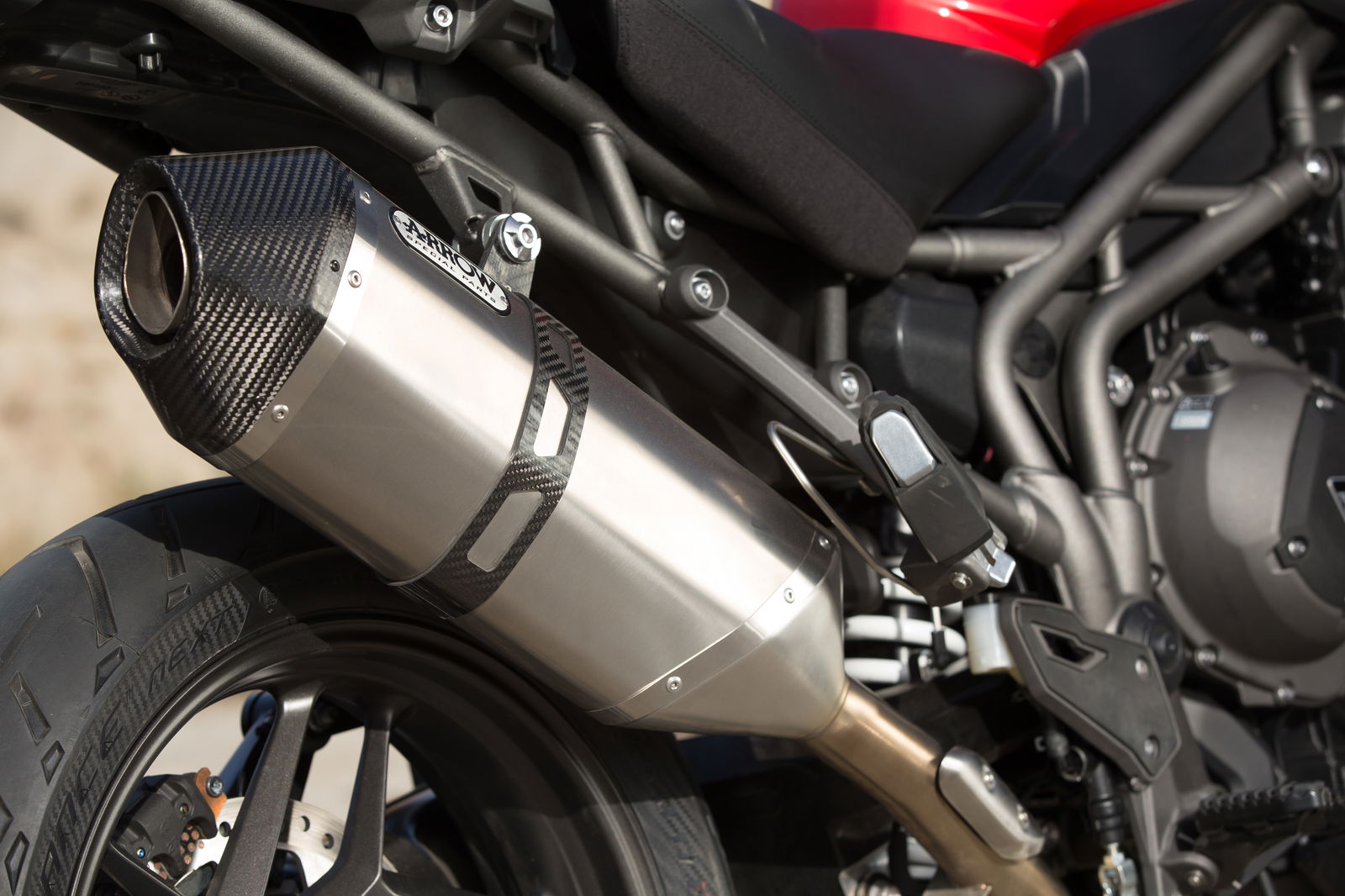
Handling:
I covered more than 180 miles on the range-topping XRt through Southern Spain’s varied terrain and the improvement on the previous generation was immediately noticeable.
The 11kg weight loss has, predominately, come from higher up and further back on the bike, and the result is a more connected feel up front and significantly improved agility.
The Tiger handles like a sports-tourer, easily turning in, leaning and swerving like something half its size. Low-speed manoeuvrability is also improved, thanks to the repositioned handlebars.
These bars, which have been moved backwards by 20mm, for me improved rider ergonomics to no end – at 5"7' and with the arms to match I found the previous positioning a bit of a stretch. Not only does the new set-up improve the feel while riding, but the extra bend it allowed my elbows made it easier to lever the bike upright from the side-stand. In the lower of the two seat settings (835mm), I could almost get my feet flat on the floor.
The standing triangle didn’t feel quite as spacious as the Explorer, and taller riders complained that it wasn’t as natural as that of competitor models.

We only rode the XCa for a short while off road, but it was well suited to the fire trails we covered. It was steady and responded well as I moved my bodyweight around. The plentiful torque meant that when I did lose speed in a soft section, I could power straight on through without having to drop a gear.
Although, if I did decide to drop a gear, it was without having to worry about the clutch, thanks to the Triumph Shift Assist, a brand-new system on the top-spec models which allows for relatively smooth clutchless up and down shifting. Back on terra firma and this system was equally impressive and proved particularly useful for reducing hand fatigue.
The Triumph approved Pirelli Scorpion Rally tyres with a lowered PSI provided excellent grip on the loose ground.
On more technical off-road sections, however, and as with other 1200cc adventure bikes, the Tiger XCa's 248kg weight would likely hold anyone but the pros back.
Suspension:
Technically, nothing has changed on the Tiger in terms of suspension. The mid- and high-spec models still feature the same Triumph semi-active WP suspension system (TSAS) as seen on the 2016 model, which allows the rider to switch between types of ride – on a scale varying from comfort to sporty, while the system controls the front and rear suspension damping and automatically adjusts the rear suspension for rider size and payload. The TSAS system has two modes of Auto and Off Road.

Meanwhile, the XR features manually adjustable WP suspension. The forks can be adjusted for rebound and compression, while the rear can be adjusted for preload and rebound.
I mostly kept the TSAS on ‘Sport’ mode while riding on the road, softening it slightly off road. Sport was firm and responsive, and well suited to the breadth of roads we rode.
In ‘Comfort’ the bike would squat under heavy acceleration, and the forks dived at the touch of the front brake. ‘Normal’ was the perfect compromise for motorway miles.
Brakes:
Brembo four-piston radial monobloc calipers with twin floating discs feature up front, and a single piston sliding caliper with a single disc at the rear.
To provide smooth and progressive braking, the Tiger features an integrated braking system, which automatically applies a percentage of rear brake as the front is used. This system is useful and hardly noticeable on the go, however it is deactivated at low speeds or off road.
The mid and top-spec Tigers add a comprehensive suite of braking technology, including cornering ABS and (five-level) traction control, while the XRt and XCa also feature Hill Hold Control, which is activated using the front brake lever, and applies the rear brake until the rider begins to move off.
Equipment:
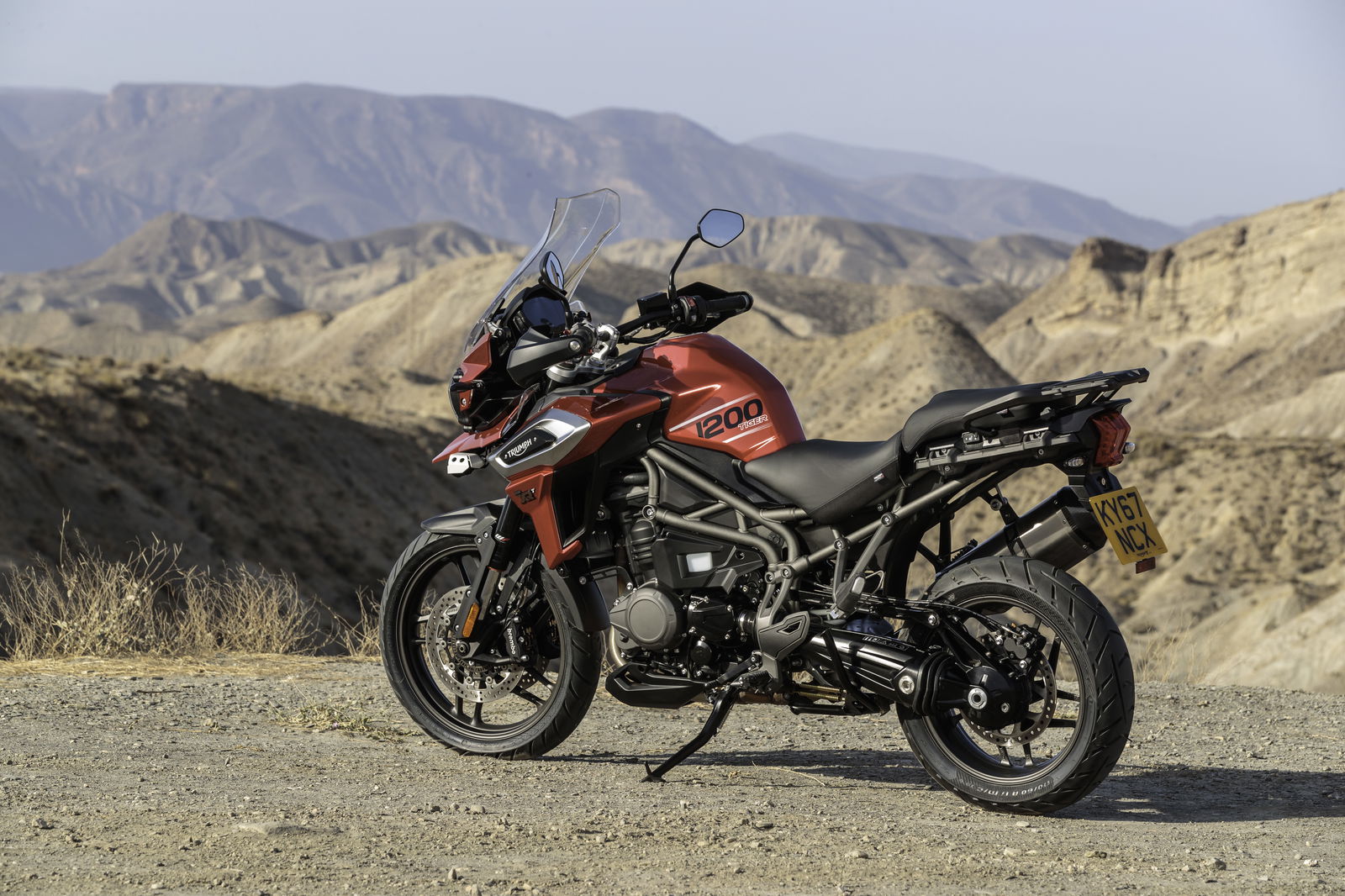
The two top-spec Tigers are dripping with innovative technology, and even the middling XRx and XCx come well dressed. However, the entry-level XR appears to have been forgotten in many cases, and so despite being almost £2,000 less than the next model up is unlikely to be a popular choice.
What it has is updated styling, which makes the Tiger look even more badass than before. Blacked out tubeless spoked and cast wheels feature, alongside a new selection of metalised paint finishes, wet painted engine components and revamped graphics.
What it doesn’t have, however, is the new TFT dash – a gamechanger for the Tiger. Standard across all other models, the full colour, five-inch screen displays all required information via a series of varying themes.
The electronically adjustable screen is standard on all bikes, while a taller touring variant comes on the XRt and XCa and is very effective and reducing wind buffeting at noise.
This screen can be adjusted via the backlit handlebar controls, which despite being well designed prove a little fiddly with thick winter gloves on.
The keyless ignition and steering lock, which all Tigers benefit from, is useful – until you need to fill up with fuel. Then it’s time to deglove and search the depths of your luggage for the key to open the fuel cap, defeating the convenience of the system,
Heated grips feature on everything from the XRx upwards, with heated rider and passenger seats added on the top spec models. Similarly, LED lights and daytime running lights are standard on all but the basic model, with the two range toppers adding Triumph’s clever Adaptive Cornering Lights system, which progressively activates four LEDs up to 31 degrees, illuminating a twisting road as you lean.
All models feature a 5v USB socket and one (on XR) or two 12v power sockets.
The XCx and XCa boast aluminium sump guards, radiator guards and engine bars
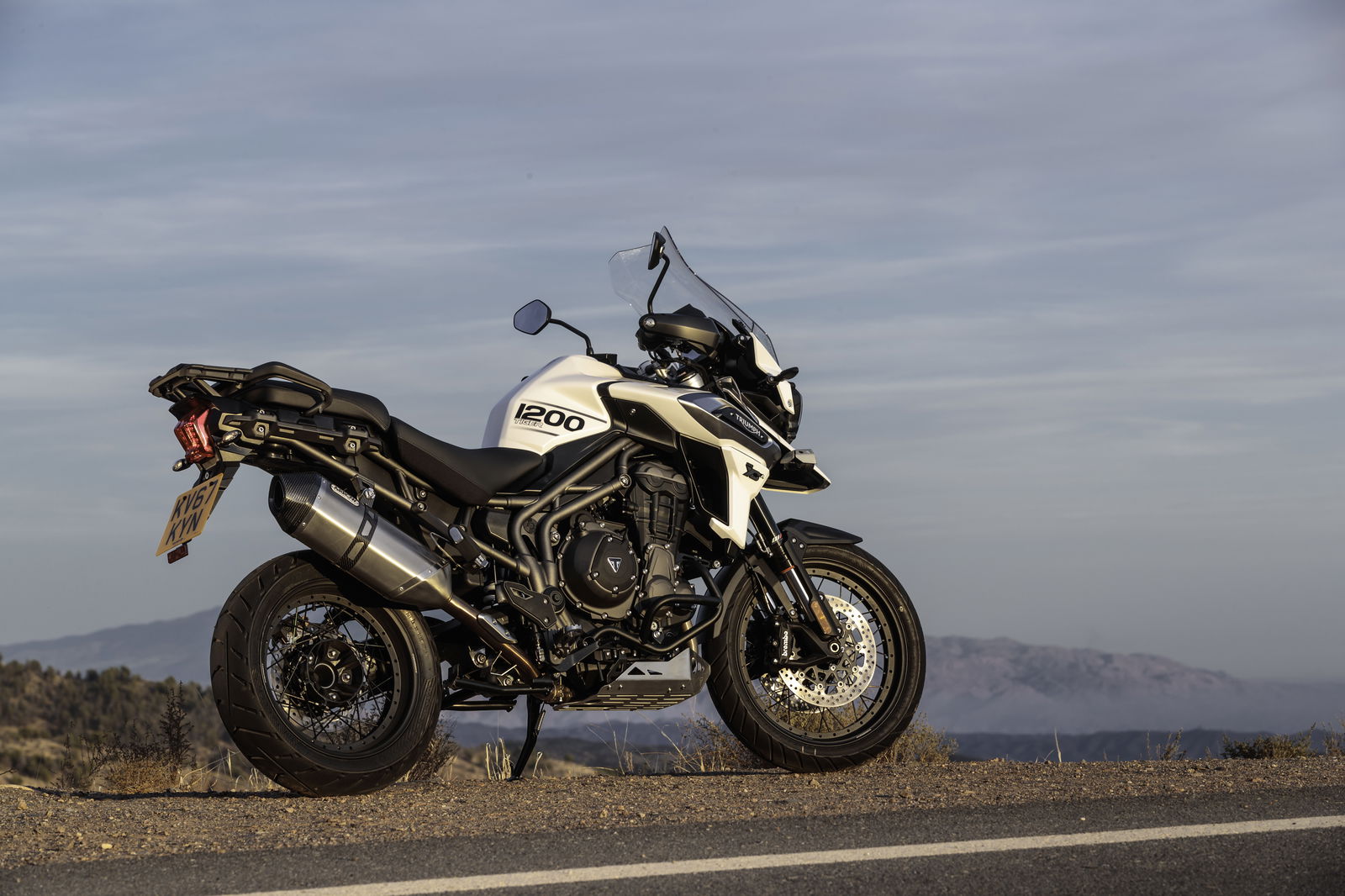
We like:
The new TFT dash is smart, intuitive and takes the Tiger to the next level in motorcycle technology.
We don’t like:
Is the new Triumph really as tough as it purports to be? During our brief off-road sejour, one journalist managed to unwittingly dent the rear rim, while another’s slow crash destroyed a mirror and pushed the bash plate on to the exhaust underneath.
Verdict:
In short, the new Tiger is in a different league to its predecessor. It’s tangibly better to ride, and that 11kg weight loss brings it more in line with the competition.
The XRt is an excellent road-going tourer, with a wide selection of technologies designed to go the distance. The XCa is equally impressive, however weighing in at almost a quarter of a ton, it’s never going to be a trailblazing off-roader. But for the occasional firetrack or muddy greenlane, it will do just fine.
At £16,150.00 and £16,950.00 respectively, the XRt and XCa may not be the cheapest in their market (the Rallye Sport costs £14,625, and the Exclusive TE £15,565), and actually cost around £1,000 more than the top spec 2017 Tiger Explorers. However, Triumph claims the models have more than £2,000 worth of extra equipment on the previous Tiger.
With a six-strong line-up starting from £12,200, there’s a Tiger 1200 for everyone – including a low ride height XRx (with a seat height of 791 – 810mm) for shorter riders.
But given the equipment disparity between the entry-level XR and middling XRx, I doubt salespeople will find it hard to upsell.

Specs:
Model tested: Triumph Tiger 1200 XRt and Triumph Tiger 1200 XCa
Price: £16,150 and £16,950
Engine: 1215cc liquid cooled, 12 valve, DOHC, in-line three cylinder
Power: 139hp
Torque: 90ft-lbs @ 7,600rpm
Weight: 243kg and 248kg
Seat height: 835 – 855mm

